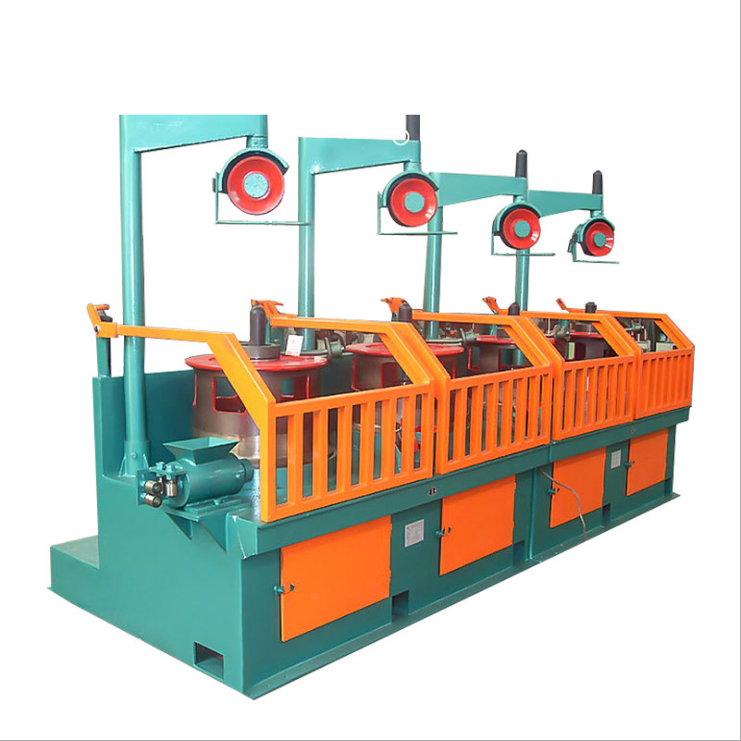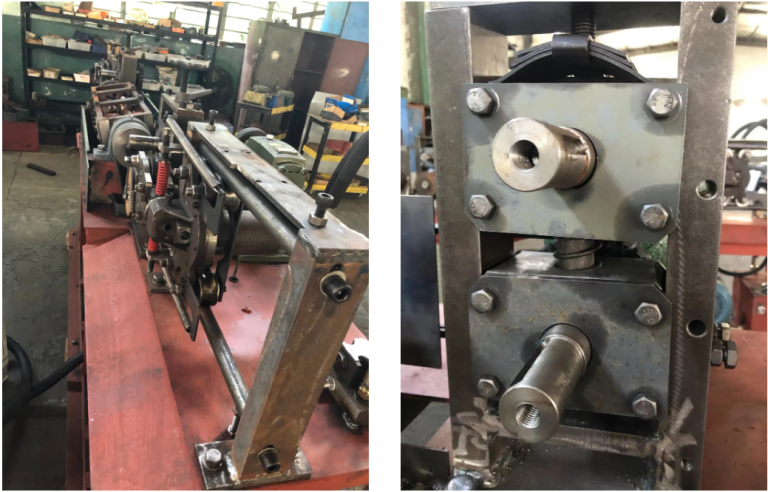
Wire straightening and cutting machines are essential tools in the manufacturing industry, providing numerous benefits to companies looking to streamline their production processes. These machines are designed to straighten and cut wire quickly and accurately, saving time and labor costs while improving overall efficiency. In this article, we will explore the various benefits of using a Wire Straightening and cutting machine in manufacturing processes.
One of the primary advantages of using a wire straightening and cutting machine is the ability to increase productivity. These machines are capable of processing large volumes of wire in a short amount of time, significantly reducing the time it takes to complete a job. This increased efficiency allows companies to meet tight deadlines and fulfill customer orders more quickly, ultimately improving customer satisfaction and retention.
In addition to improving productivity, wire straightening and cutting machines also help to reduce labor costs. By automating the wire straightening and cutting process, companies can eliminate the need for manual labor, saving money on wages and reducing the risk of human error. This not only results in cost savings for the company but also ensures a higher level of accuracy and consistency in the finished product.
Another benefit of using a wire straightening and cutting machine is the ability to produce wire with precise measurements. These machines are equipped with advanced technology that allows them to straighten and cut wire to exact specifications, ensuring that each piece meets the required dimensions. This level of precision is essential in industries where accuracy is critical, such as automotive manufacturing or electronics production.
Furthermore, wire straightening and cutting machines are versatile tools that can handle a wide range of wire sizes and materials. Whether working with steel, aluminum, copper, or other metals, these machines are capable of processing various types of wire with ease. This versatility allows companies to use the same machine for multiple applications, reducing the need for additional equipment and saving space in the manufacturing facility.
In addition to their productivity and cost-saving benefits, wire straightening and cutting machines also improve workplace safety. By automating the wire processing process, companies can reduce the risk of injuries associated with manual labor, such as cuts, strains, and repetitive motion injuries. This creates a safer work environment for employees and helps to minimize downtime due to workplace accidents.
Overall, the benefits of using a wire straightening and cutting machine in manufacturing processes are clear. From increased productivity and cost savings to improved accuracy and workplace safety, these machines offer numerous advantages that can help companies stay competitive in today’s fast-paced market. By investing in a wire straightening and cutting machine, companies can streamline their production processes, enhance product quality, and ultimately achieve greater success in their industry.
How to Choose the Right Wire Straightening and Cutting Machine for Your Business
Wire straightening and cutting machines are essential tools for businesses that work with wire on a regular basis. These machines can help increase efficiency, accuracy, and productivity in your operations. However, with so many options available on the market, it can be overwhelming to choose the right machine for your specific needs. In this article, we will discuss some key factors to consider when selecting a wire straightening and cutting machine for your business.
One of the first things to consider when choosing a wire straightening and cutting machine is the type of wire you will be working with. Different machines are designed to handle different types of wire, so it is important to choose a machine that is compatible with the wire you will be using. Some machines are designed for thin, delicate wires, while others are better suited for thicker, more robust wires. Make sure to carefully consider the gauge and material of the wire you will be working with before making a decision.
Another important factor to consider is the speed and accuracy of the machine. Some machines are capable of straightening and cutting wire at high speeds, while others may be slower but more precise. Depending on your specific needs, you may prioritize speed over accuracy or vice versa. Consider the volume of wire you will be processing and the level of precision required for your operations when choosing a machine.
Additionally, it is important to consider the size and capacity of the machine. Make sure to choose a machine that can handle the volume of wire you will be working with on a daily basis. If you have limited space in your facility, you may also need to consider the footprint of the machine and whether it will fit comfortably in your workspace. It is important to choose a machine that is both efficient and practical for your specific needs.
When selecting a wire straightening and cutting machine, it is also important to consider the maintenance and support options available. Look for a machine that is easy to maintain and repair, with readily available replacement parts. Additionally, consider the level of customer support offered by the manufacturer. A reliable support system can help ensure that your machine stays up and running smoothly, minimizing downtime and maximizing productivity.
Finally, consider your budget when choosing a wire straightening and cutting machine. Prices can vary widely depending on the features and capabilities of the machine, so it is important to set a budget and stick to it. Consider the long-term costs of ownership, including maintenance, repairs, and operating costs, when making your decision.
In conclusion, choosing the right wire straightening and cutting machine for your business is a crucial decision that can have a significant impact on your operations. Consider factors such as the type of wire you will be working with, the speed and accuracy of the machine, the size and capacity, maintenance and support options, and your budget when making your decision. By carefully evaluating these factors and choosing a machine that meets your specific needs, you can ensure that your operations run smoothly and efficiently.






